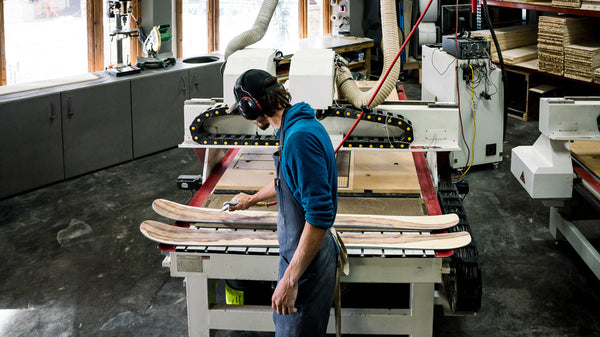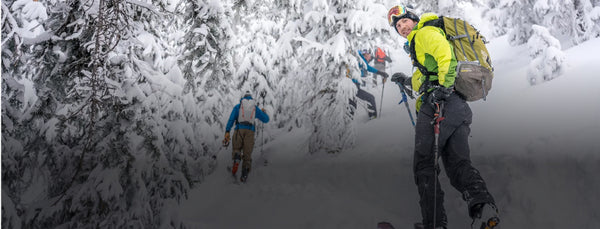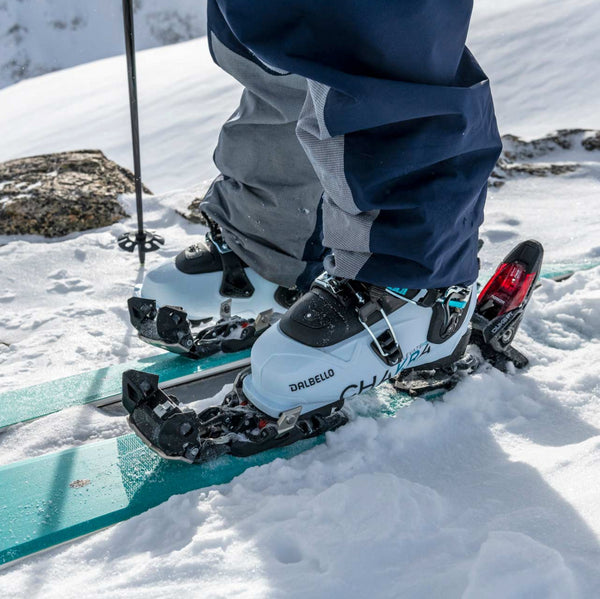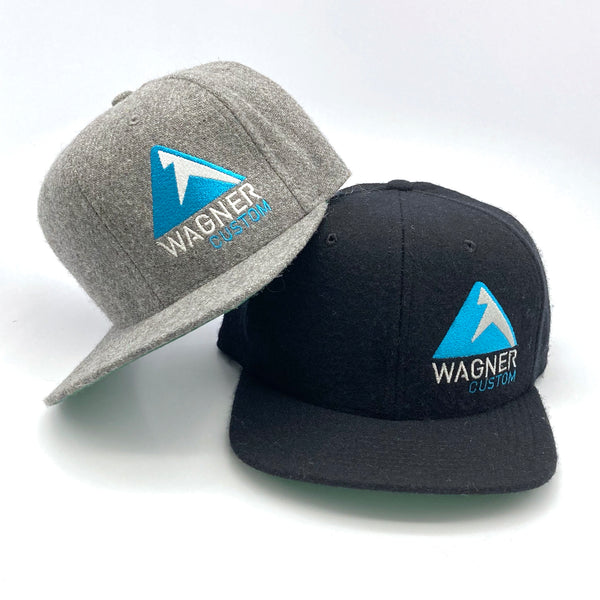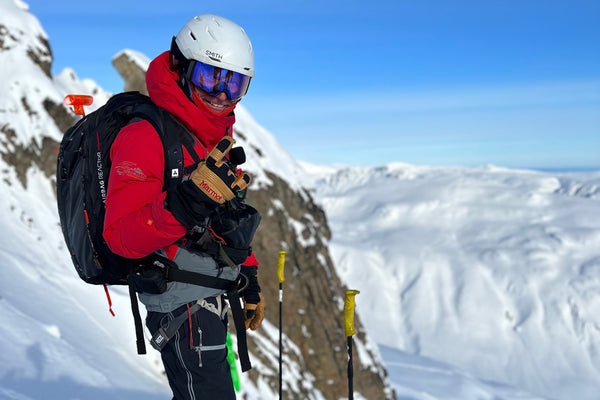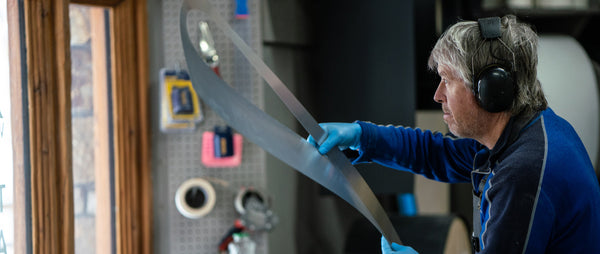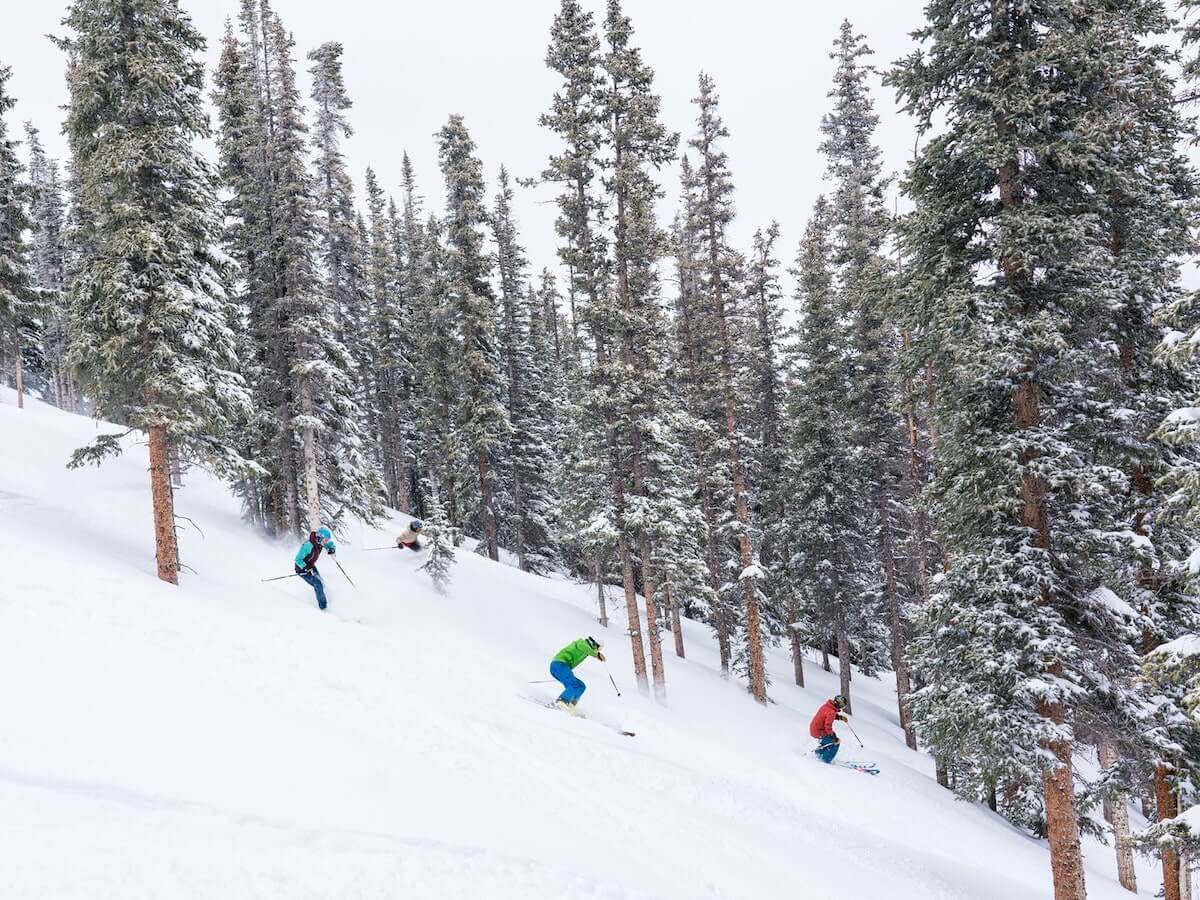
SKI BUYER'S GUIDE, PART 5: SKI STIFFNESS AND FLEX PATTERN
One of the final steps in building your perfect ski is to determine the flex pattern.
With Wagner, you’re never stuck in a one-flex-fits-all situation—we can adjust the stiffness of every ski we make. If you like the feeling of vibration-damping metal on hardpack, for example, but want a ski that will still be soft enough for bumps, we’ve got you.
The flex and stiffness affects your skis’ performance, and are determined by ski width, ski length, materials, and the properties of the core. In order to understand the functions of these various elements that make up the ski, we encourage you to catch up on the previous articles from our Ski Buyer’s Guide:
Longitudinal Stiffness vs Torsional stiffness
There are two types of stiffness in a ski. The first is longitudinal stiffness (from tip to tail), which is what you see people testing when they flex the ski in a ski shop. The torsional rigidity of a ski, on the other hand, is the ski’s resistance to twisting. Both are important factors in performance.
Longitudinal stiffness (tip to tail)—determined by the length, core, and structural layers—affects stability at speed and overall responsiveness in the ski. Torsional stiffness—determined by structural layers like fiberglass or metal—affects carveability and precision when turning.

Flex Pattern
A flex pattern is the relative stiffness of tip and tail, and it takes into account both longitudinal and torsional stiffness. The flex pattern changes depending on skier weight and ability (a lightweight but powerful skier can flex a ski more deeply than a heavier novice). Generally speaking, a ski does not have the same level of flex throughout the entire ski—it’s usually stiffer underfoot, where the most pressure is applied.
Wood cores offer the most even flex pattern, giving a feeling of pop or rebound and smooth transitions without bucking you around. Wood cores are also more durable. Here at Wagner, we use only wood cores for our skis, because the natural material simply flexes the best. (That said, we also build lightweight backcountry skis with carbon, but we blend it with the wood to keep the integrity of the flex.)
SOFTER SKIS VS. STIFFER SKIS
Generally speaking, skis that have a stiff flex will feel stable at speed and have good precision on hard snow. Stiff skis grip better on hard snow, too, because they maintain full-edge contact and don’t bounce off the snow. However, a ski that is too stiff will buck you around and burn out your quads. It will make you work harder to stay centered (read: you might find yourself backseat-driving), and you may have to slow down to stay in control.
A softer ski will be easier to initiate into and release from turns, and will feel more forgiving in bumps. If your ski is too soft, however, you may experience the sensation that you are “going over the handlebars,” which does not breed confidence or enable you to improve. Soft skis can also feel less stable at speed and have less grip on hardpack.
When it comes to choosing the right stiffness for you, it’s all about finding your sweet spot. For many skiers, a versatile ski will have a forgiving flex tip to tail and enough torsional stiffness to offer stability and edge-hold.
At Wagner Custom, our ski designers take all of your factors—height, weight, skiing ability, skiing style, terrain preferences—into consideration to determine your perfect flex. Call us today, and we’ll get you dialed.
Now that you know about length, width, shape, materials, and flex, read Part 6 of our Ski Buyer’s Guide: Putting It All Together.
Related Articles:
- THE BEST SKIS FOR BEGINNERS, INTERMEDIATES AND ADVANCED SKIERS
- ON-MOUNTAIN VS BACKCOUNTRY SKIS
- CAMBER VS ROCKER

